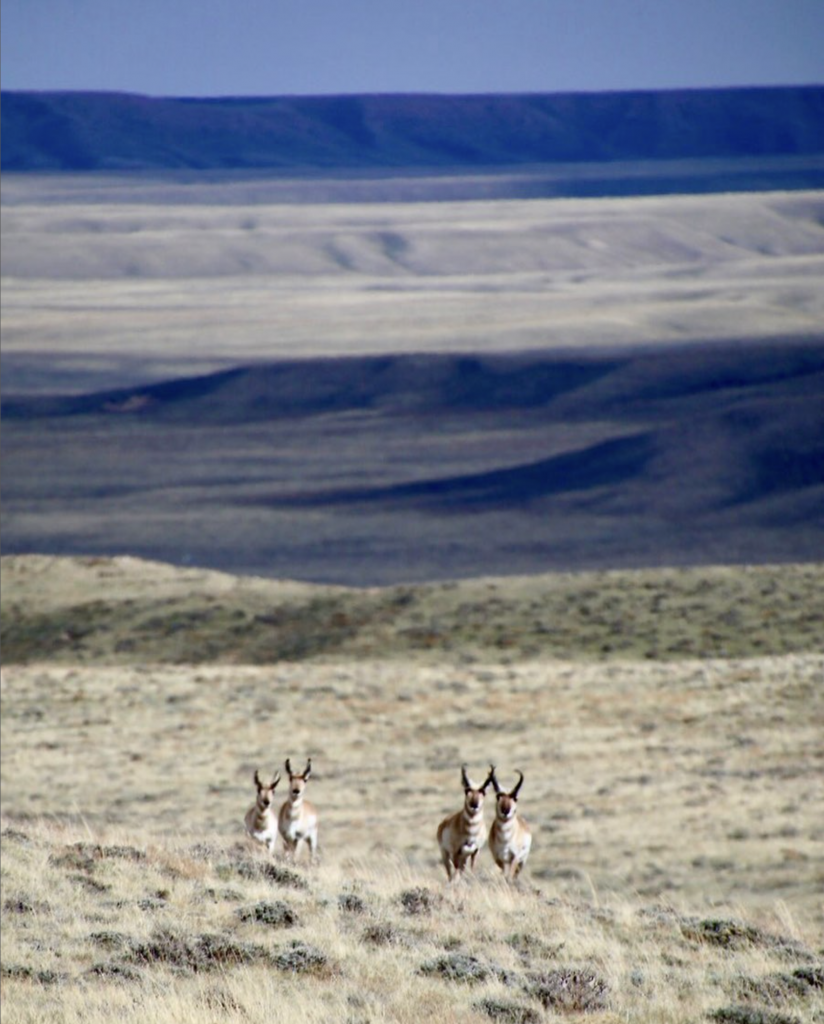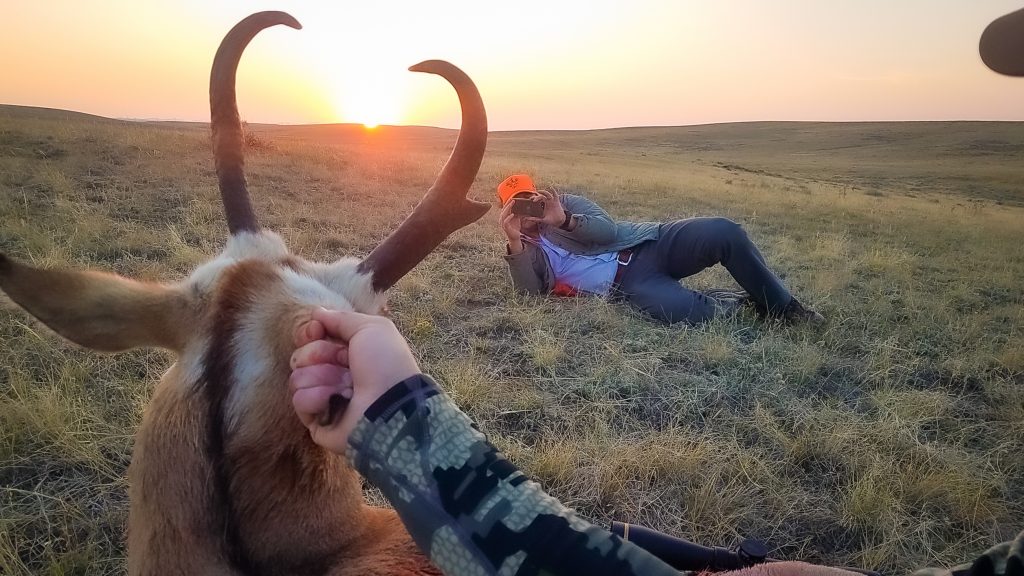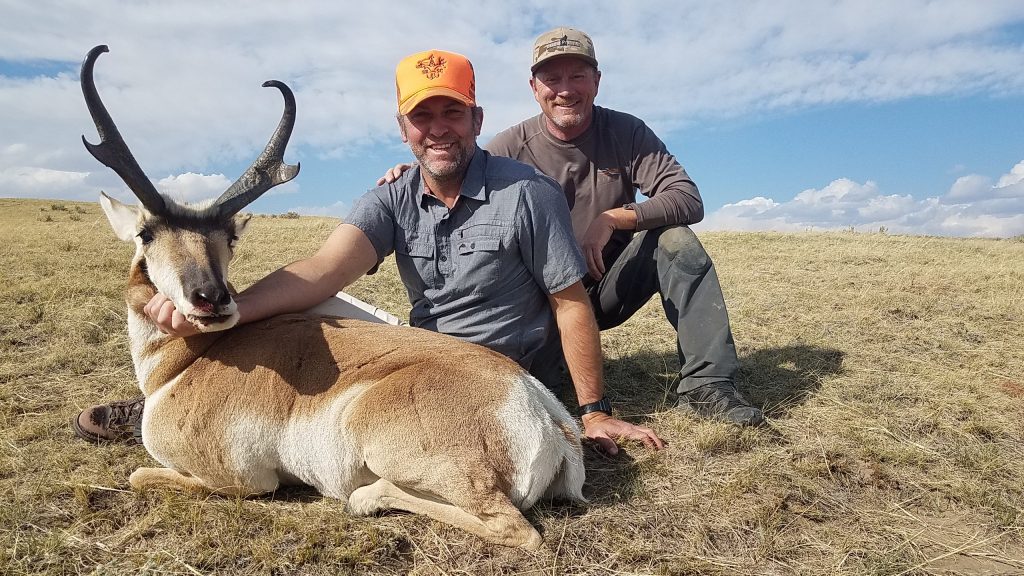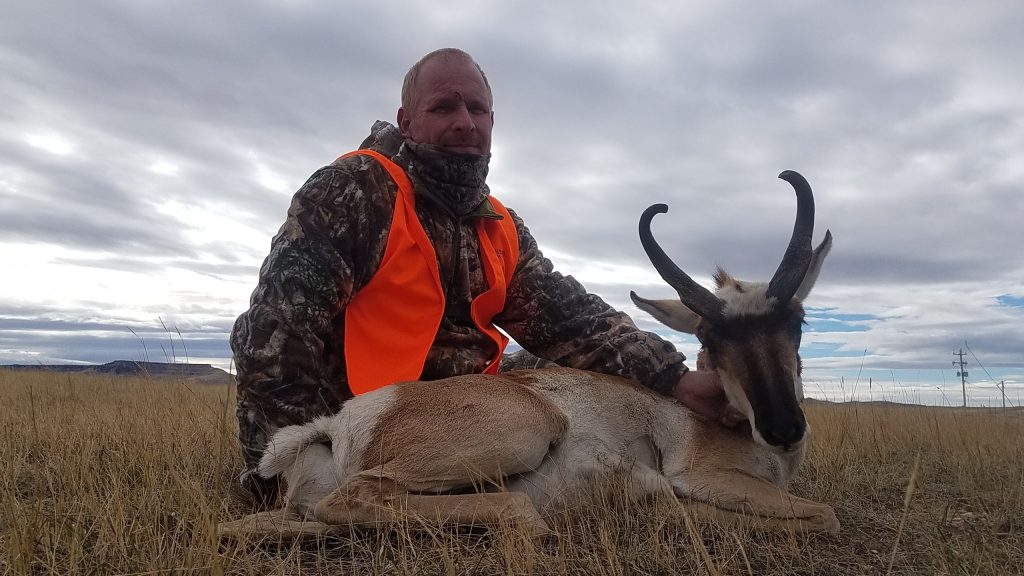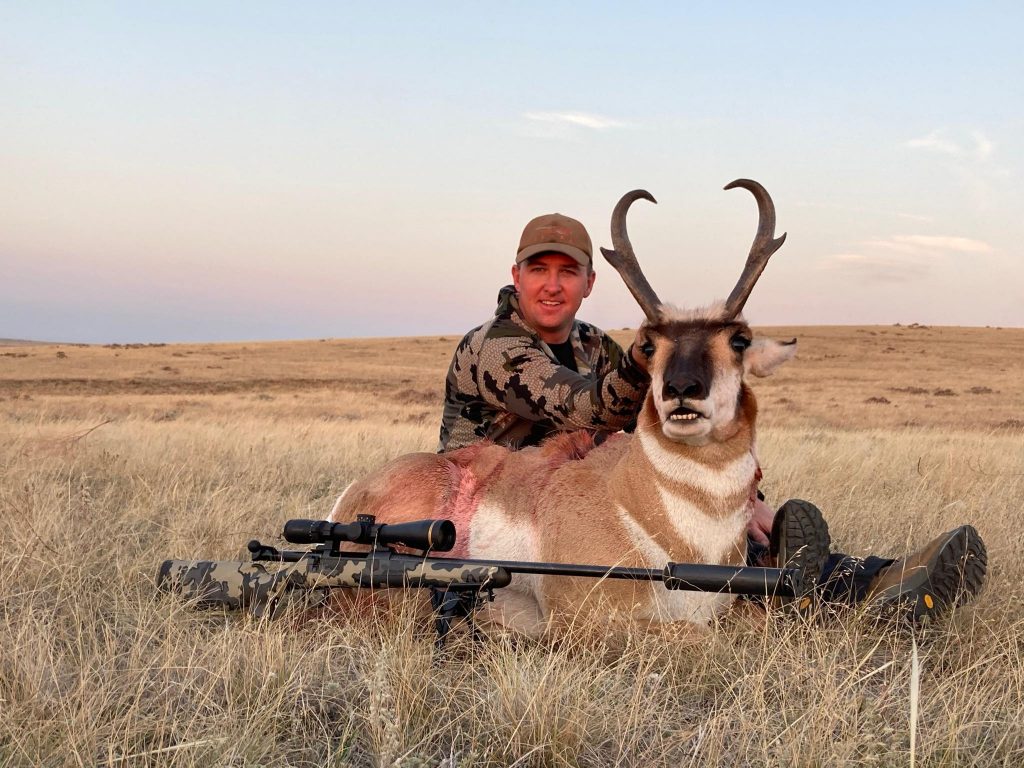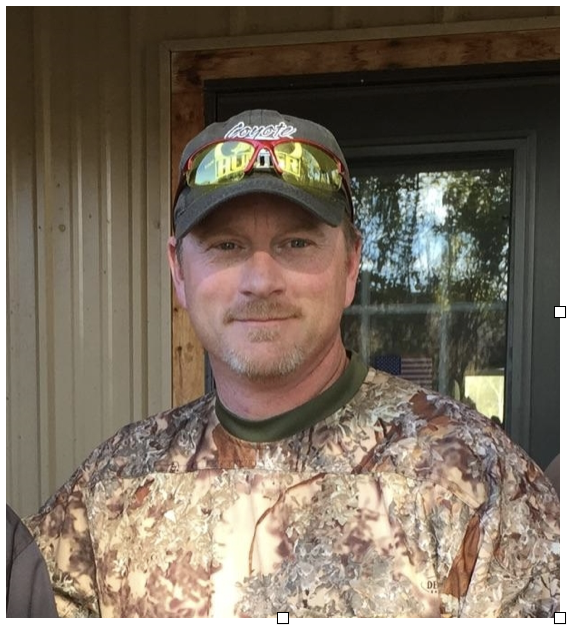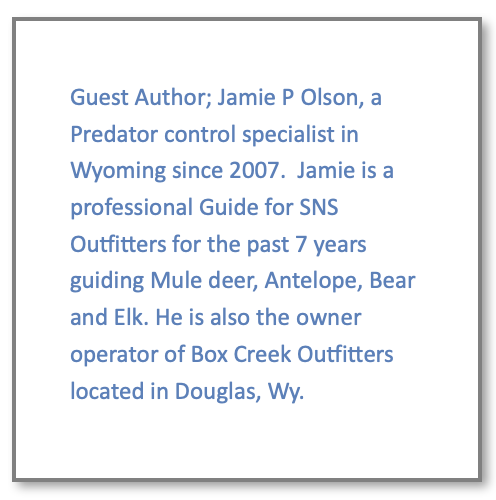Test your Pronghorn knowledge with SNS
The Pronghorn Antelope is not an Antelope at all; it is the last remaining of its species today. Our North American Pronghorn are more closely related to a Giraffe than they are to African plains Antelope. Pronghorns are Ruminants with a four chamber stomach, forked horns that shed each year after the rut (unique in that they are the only horned animal that shed this sheath each year), the horn itself is a 2-part structure, an interior bone that is part of the skull, is covered by an Keratinous exterior sheath grown by specialized hair follicles. The scent glands on the Pronghorn are on either side of the jaw within a black patch on their cheek, between the hooves, and on the rump.
Pronghorn are a favorite of mine to hunt with a rifle and a great way to start a new hunter on Western big game hunting. The abundance of Antelope throughout the state of Wyoming allow for a new hunter to see dozens of mature Pronghorn bucks per day. We start our day with a pair of binoculars and a spotting scope. Make sure you have plenty of light to identify the age and size of the buck. The black horns can be hard to see in low light conditions, making it tough to judge the size and character of the horns. Also on the Mature bucks the Roman nose is evident the same as in Mule deer and Whitetail deer. Pronghorn move to and from water all day and will graze from sun up to last light. Unlike Mule deer and elk, where it is typically a morning hunt, you can hunt Pronghorn Antelope sunup to sundown.
Once we have located a Pronghorn that we want to hunt, the approach is key. We typically want to come in high. During early stages of the season the bucks are grazing, and watering most of the day with periods were they will be bedded down. As the rut comes into full swing the amount of ground these animals can cover in any given day would make ultra-marathon runners jealous. A mature buck can cover a 15 square mile territory which can overlap several other buck’s range. Often times you will be hunting one buck that will decide he needs to be somewhere else and just as fast another mature buck can show up.
Unlike most big game animals with Pronghorn the wind direction is not an issue. Similar to Bobcats, Antelope can smell you but do not react to catching your wind. Both cats and antelope trust their eyes more than their nose. There is an old saying among trappers that you kill a Coyote with his nose and a Bobcat with his eyes. Antelope have amazing eyesight, and if you can see them they can see you…at almost any distance. With eyesight as good as most rifle scopes, it is best to keep something between you and the buck as you make your stalk. The last few feet as you crest a high point for a shot are typically done at a crawl. Long range proficiency with a rifle will reduce some of the crawling and may buy you a few more seconds but once the buck spots you (and they typically do), they are off and over the next hill. Just pick yourself up and go after him. They are very forgiving animals and generally do not go very far once they have been spooked and typically live in very open country. A Whitetail can run a few hundred yards and you will not see it again. Elk can run to the next mountain range. Mule deer just vanish. An antelope will run until you are out of eye sight (the next hill) and can just go back to whatever it was doing. If not, wait a minute, there will be another opportunity in short order.
Here’s what I recommend you have for your hunt: A good pair of binoculars 7X – 10X is a must. Also essential is a way of stowing them so you have easy access but can get them out of the way quickly.
Rifle type and caliber can be a lengthy discussion. The main consideration is a cartridge you are familiar and comfortable with out to 350 yds. Further is better, but most high-power rifles can easily make that distance with very little hold over on a 200 yd. zero. I feel a .243 shooting a 95 gr. BTSP is hard to beat for Pronghorn. I suggest leaving the polymer tip bullets for paper. Big game animals require a well-constructed hunting bullet. I have seen too many situations were poor bullet performance was attributed to a rapidly expanding bullet that did not allow for enough penetration.
Another item that is a must is a Bipod mounted on your rifle or at the very least shooting sticks. I own both. At times one will perform over the other. All my guns have Bipods mounted on them when I head out to the field.
Range finders and Ballistic rifle scopes make long distance shots much easier. The days of using your reticle to judge range has been replaced by a very accurate system of a laser rangefinder and Ballistic Drop Compensating or Minute of Angle knobs. The BDC knobs reflect actual yardage and foremost hunting situations is a very easy system to use and relatively inexpensive add on to your rifle scope.
For Archery gear, preferably a draw weight of at least 55 – 65 lbs. Again, as with bullets, an arrow of heavy construction for good penetration is recommended.
Spotting scopes can be a spendy item and I do not believe that a cheap one saves you anything. You can get a good spotting scope in that $750-$1200 range. I like a Spotting scope with a variable of 15x – 40x. I believe in most situations that is more than enough to judge an animals size and age.
Where Spot and Stalk are the norm for rifle hunters, archery is typically sitting on tanks in a blind. When it is hot and dry, Antelope water all day and will travel to tanks and ponds readily. Studies have shown that Antelope, as with Elk, will look for a dominant cow or doe to take the lead. With Pronghorn, even if the youngest in a group heads for water, the herd can and at times will follow. Decoys are thought of as a tool for rutting bucks in early season. With archery they can be a confidence builder at a tank. At distance Antelope will more readily approach a tank with other Antelope already watering and a decoy can elicit a response at times when you have an inactive tank. Decoys during full rut can be effective in a spot and stalk with archery gear but you really need broken terrain to allow for consistent success. With persistence, if you can find the right buck, decoying can be fast paced and exciting.
If you are new to big game hunting, or someone who has lots of experience hunting but a limited budget and/or time to hunt, the North American Pronghorn Antelope is a great pursuit. With the abundance of Pronghorn in western states such as Wyoming and the availability of tags these little speed goats are fun to hunt, and taste great.


